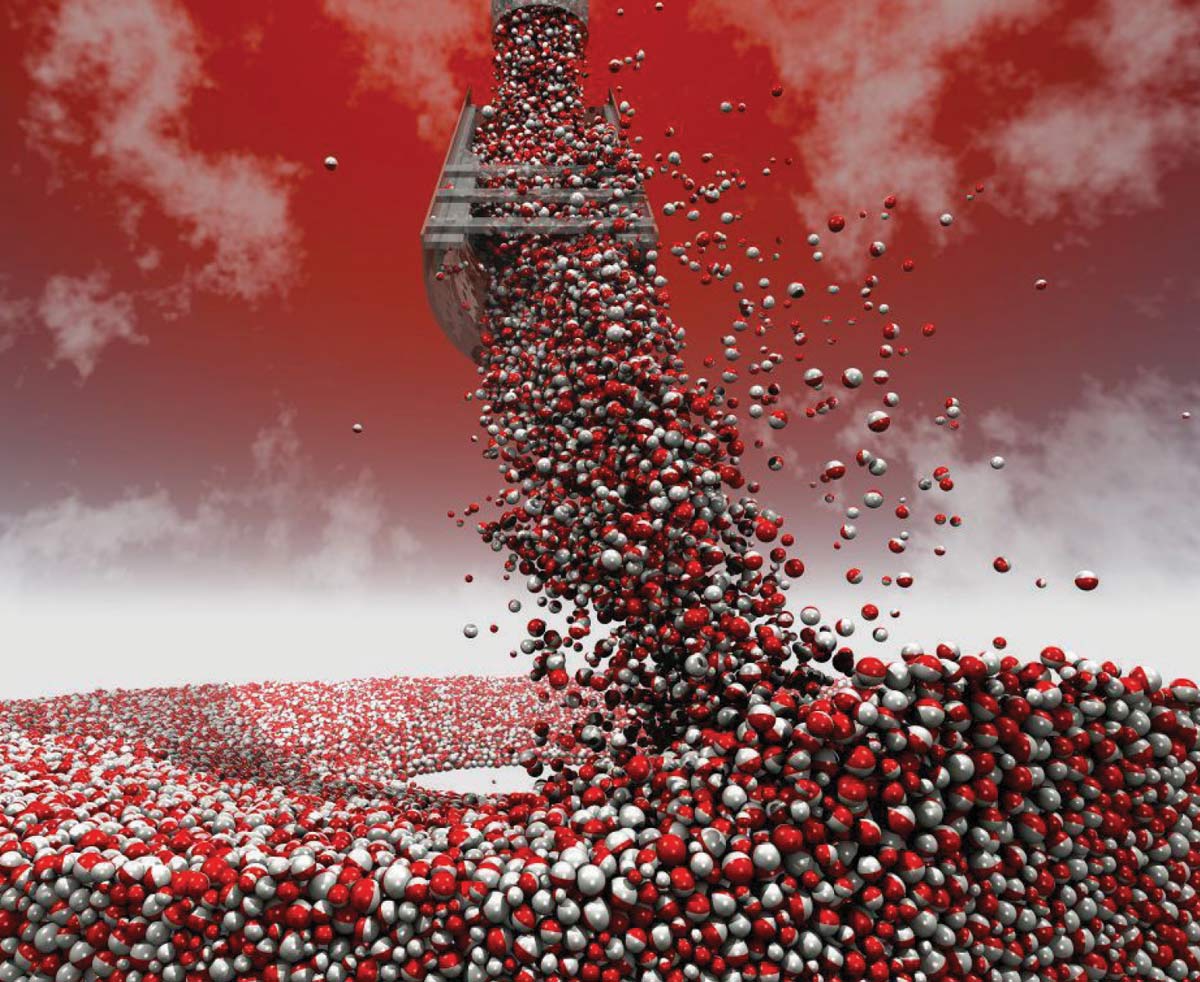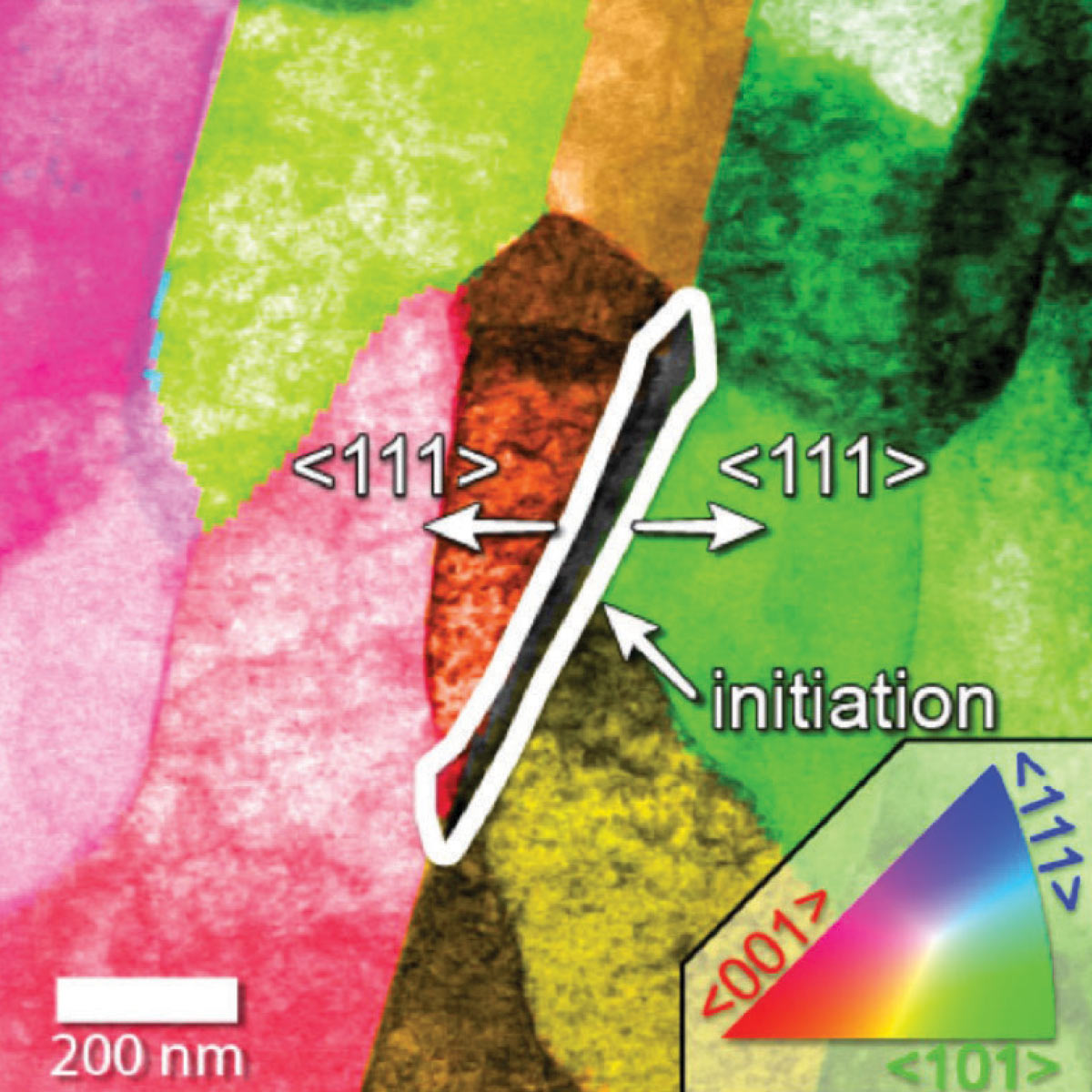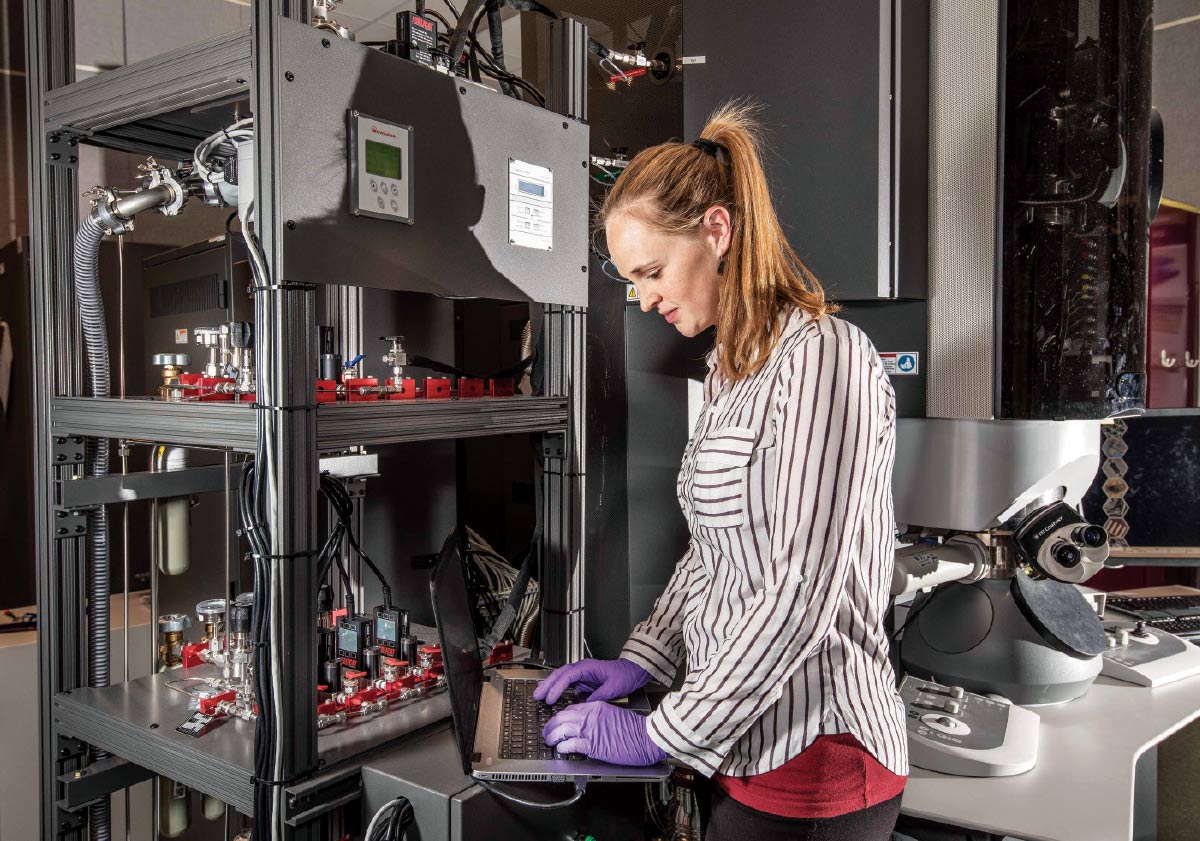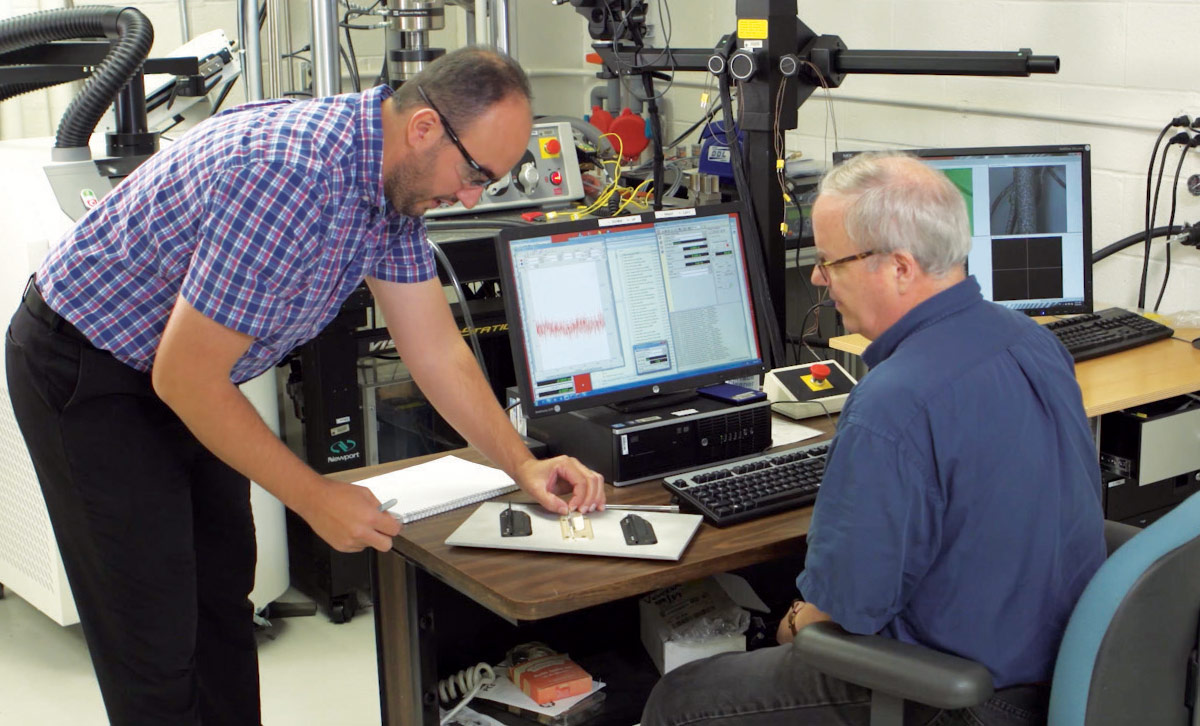THE LATEST R&D IN MATERIALS, TECHNOLOGIES, PROCESSES AND SUSTAINABILITY LAUNCHES A NEW DECADE OF DISCOVERY
orldwide, metals producers partner with universities and national laboratories to explore everything from artificial intelligence, big data, the reduction of harmful pollutants during production, preventing corrosion on a nanoscale, shaping material on a microstructure level and producing ductile material from powder.
All these efforts, it is hoped, will make metals stronger, lighter, cleaner, more efficient and longer lasting while creating jobs and a safer environment for workers and consumers. Potential applications are too numerous to mention, but Modern Metals has selected nine of the latest developments to highlight.

hape Corp., Grand Haven, Michigan, won the 20th annual Swedish Steel Prize for 2019 for its use of martensitic steel in a 3D-formed tube for automotive roof rail applications.
Shape Corp. efficiently used a modern material with the highest possible strength level, which represents “a major opportunity in challenging other lightweight materials with a steel solution that allows for circular material flows,” stated Eva Petursson, chair of the Swedish Steel Prize jury and head of SSAB’s research and innovation.
Shape Corp. used cold-forming martensitic steel grade Docol 1700M from SSAB and 3D forming to create a lightweight solution for A-pillar and roof rail tubes, with a minimal profile size. The components are being assembled into the 2020 Ford Explorer and 2020 Ford Escape.
The 3D-formed A-pillars also have an improved strength-to-weight ratio of over 50 percent, which has led to an overall mass reduction of 2.8 kilograms to 4.5 kilograms per vehicle.
£35 million research network, launched a year ago, brings together steelmakers and university experts on a seven-year research program to transform the UK steel sector. Called Sustain, he network is led by Swansea University, partnered with the universities of Sheffield and Warwick, and involves more than 20 other entities across the UK steel industry.
The aim of Sustain is to transform the whole steel supply chain, making it cleaner, greener, smarter and more responsive to the fast-changing needs of customers. It s work will be concentrated on two areas:
1. Zero-waste iron and steelmaking, with the aim of making the industry carbon neutral by 2040. The network will investigate new ways to make processes and products even greener, such as harvesting untapped energy sources, capturing carbon emissions and reprocessing societal and industrial waste streams.
2. Smart steel processing: Sustain will develop new ways of acquiring and using data in new metallurgical processes, which can deliver bespoke high-tech products.
“Developing higher performance steels with reduced carbon footprint during manufacture is key to reducing CO2 emissions and therefore contributing to the reduction in global warming,” stated Professor Mark Rainforth of the University of Sheffield.


n November, thyssenkrupp Steel, Duisburg, Germany, launched a series of tests into the use of hydrogen in a blast furnace. The tests will help the company learn how to reduce carbon dioxide emissions during steelmaking.
thyssenkrupp wants to become climate neutral by 2050. By 2030, emissions from the company’s own production and processes (scope 1 emissions) as well as emissions from the purchase of energy (scope 2) are targeted for a 30-percent reduction.
“Steel production will play an important part in reaching our climate targets because the potential for reducing emissions is huge. That’s why we’re working flat out to drive the transition to hydrogen technology,” Klaus Keysberg, member of the executive board, stated.
In the traditional blast furnace process, 300 kilograms of coke and 200 kilograms of pulverized coal are needed to produce 1 metric ton of pig iron. The coal is injected as an additional reducing agent into the bottom of the blast furnace shaft through 28 tuyeres. thyssenkrupp Steel plans to gradually extend the use of hydrogen to all 28 tuyeres on Furnace No. 9 and then, starting in 2022, expand it to all three blast furnaces. Whereas injecting coal produces CO2, hydrogen generates water vapor. Emission reductions of up to 20 percent are therefore already possible.
Premal Desai, chairman of thyssenkrupp Steel Europe, claimed, “We are doing pioneering work here. The use of hydrogen is the key lever for climate-neutral steel production. Today’s test is another step in the transformation of our production, which will culminate in green steel.”
Following the conversion of the blast furnaces, the company plans to build large-scale direct reduction plants, which will operate with hydrogen-containing gases, starting in the mid-2020s. The sponge iron they produce will initially be melted down in the blast furnaces but will eventually be processed into crude steel in EAFs using renewable energies.
oodle.ai, which provides artificial intelligence solutions, and SSAB Americas plan to deploy Enterprise AI applications throughout SSAB’s U.S. steelmaking operations to enable probabilistic, pattern-based decisions, rather than deterministic, rules-based decision-making.
SSAB Americas will use its own sensor data and pair it with external data to anticipate and plan for key variables affecting business operations including asset uptime, product quality and production flow. By continuously learning over time, Noodle.ai’s applications identify patterns in complex combinations and production variations, predict costly product quality issues before they occur, and detect opportunities to recommend plant-wide optimizations to increase profit.
“We are excited to implement new digitalization technologies and to explore how the application of Enterprise AI can impact our performance and create a competitive advantage,” said Tom Toner, vice president of operations for SSAB Americas.
 we are doing pioneering work. hydrogen is the key lever for climate-neutral steel pro-duction.
we are doing pioneering work. hydrogen is the key lever for climate-neutral steel pro-duction. 
acific Northwest National Laboratory (PNNL) published a paper last year about how two forms of magnesium (ZK60 and T6) processed into tubing using a manufacturing technology called Shear Assisted Process and Extrusion (ShAPE) were found to have quite similar and improved microstructures, even though they began vastly different.
This finding confirms that the lab’s proprietary ShAPE technology can extrude components directly from low-cost castings and deliver improved microstructures compared to conventional extrusion processes. The results could mean lower cost and potentially higher performing product for the automotive, aerospace and other industries.
For automotive applications, magnesium has the potential for 80 percent weight savings compared to steel and 30 percent savings compared to aluminum.
Magnesium alloys have accounted for only 0.5 percent of a typical passenger vehicle’s weight during the past two decades because magnesium typically needs to be reinforced with expensive rare earth elements to bolster its energy absorption properties. To investigate how processing non-rare earth element-containing (and inexpensive) magnesium feedstocks affect extruded product performance, the PNNL team turned two feedstock materials into tubes using the ShAPE technology.
Analyses of both tubes showed that the microstructures were virtually identical, suggesting that the end product is independent of the starting form of the magnesium alloy. This indicates that ShAPE can be used to extrude products directly from low-cost castings, in a single step, while still achieving properties that exceed those of conventionally extruded tubing.


[ Below ] Sandia National Laboratories researcher Katherine Jungjohann, principal investigator and lead microscopist for a study that pinpointed a major cause of corrosion in pipelines, looks for corrosion with a new transmission electron microscope at the Center for Integrated Nanotechnologies. The gas valves on the shelves produce different testing environments.

esearchers at Sandia National Laboratories, the U.S. Department of Energy’s Center for Integrated Nanotechnologies and Aramco Research Center found that a particular form of nanoscale corrosion is responsible for unpredictably decreasing the working life of steel pipes.
Using transmission electron microscopes, which shoot electrons through targets to take pictures, researchers were able to pin the root of the problem on a triple junction formed by a grain of cementite (a compound of carbon and iron) and two grains of ferrite. This junction forms frequently during most methods of fabricating steel pipe.
The scientists found that interfacial disorder in the atomic structure of those triple junctions made it easier for the corrosive solution to remove iron atoms along that interface.
In an experiment, the corrosive process stopped when the triple junction had been consumed by corrosion, but the crevice left behind allowed the corrosive solution to attack the interior of the steel.
“We thought of a possible solution for forming new pipe, based on changing the microstructure of the steel surface during forging, but it needs to be tested—and patented if it works,” said Sandia’s principal investigator Katherine Jungjohann. “But now we think we know where the major problem is.”
Aramco senior research scientist Steven Hayden added, “The work is already being translated into models used to prevent corrosion-related catastrophes like infrastructure collapse and pipeline breaks. We are optimistic that further study will allow us to rethink manufacturing processes to minimize the expression of the susceptible nanostructures that render the steel vulnerable to accelerated decay mechanisms.”
eparately, PNNL produced nano-structured rods and tubes directly from high-performance aluminum alloy powder, in a single step, using a Solid Phase Processing approach.
Applications might be found in sectors such as automobile manufacturing, where high costs historically limited the use of powdered high-strength aluminum alloys. High-performance aluminum alloys made from powder have long been used in lightweight components for aerospace applications but were too expensive for the auto industry.
Besides providing the alloy powder, SCM Metals Products Inc. performed mechanical tests to validate the resulting material’s performance. PNNL and SCM are now collaborating on a project for the DOE’s Office of Technology Transitions to scale up the process for larger diameter extrusions.
cientists at Ames Laboratory think heat pumping systems designed with shape memory alloys (SMA) could lead to greener, more energy efficient HVAC and refrigeration systems than currently available gas compression models.
For that application to reach commercial scale, shape memory alloys need to remember their original shape more exactly, for longer periods of time, through many repeated cycles.
Ames researchers compared two copper-based SMAs of the same composition but fabricated differently; after annealing, the samples were cooled at different rates. Both samples were heated inside a transmission electron microscope so scientists could observe the martensitic phase transition in real time.
The rapidly cooled sample transformed at a lower temperature and with better “memory” than the more slowly cooled sample. Researchers attributed this to the formation of tiny nickel-rich dots that appeared in the slowly cooled sample, which changed the phase transition pathway and negatively affected the alloy’s performance.
“Those Ni-rich precipitates change the matrix alloy composition and make phase transition harder to reverse, thus the energy loop is less reliable,” said Ames scientist Lin Zhou. “It is this kind of insight that will help us fabricate better SMAs.”

MAs are also transforming aviation applications research. In the basement of the Materials and Structures Laboratory at NASA’s Glenn Research Center, a shiny machine stands so tall it punches a hole through the drop ceiling tiles. But this equipment tests a slight metal rod, only 6 inches long, made from an SMA that is poised to change the future of flight.
NASA has tested SMAs for several research projects, including Martian rock-splitters and wheels for its rovers, but this latest application might soon be used on Earth. NASA is working with Boeing Co. to test how SMAs can be used in deployable vortex generators, the small fins on airplane wings that help control airflow during flight.
Most VGs on airplanes are fixed devices designed to improve performance during takeoff, landing and irregular conditions. But innovations with shape memory alloys allow for the creation of “smart” VGs, which move when they sense a change in the environment.
Airframe designers will be able to use this tool to reduce drag throughout the entirety of a flight. Future airplanes would adjust functions in response to changes in temperature, altitude and airspeed, making them more adaptive and more like birds.
The shape-memory alloy parts were installed on Boeing’s ecoDemonstrator 777. The small rods were inserted along the hinge line of a VG where it connects to the wing. As the shape memory alloy cools off, it twists. This twisting motion pulls the fin down to lie flat against the wing. As the aircraft moves into warmer conditions, the alloy retracts to its original shape, lifting the fin upright.
“There are no heaters, no coolers,” Materials Research Engineer Othmane Benafan said. “The alloys are tuned exactly to environmental temperatures.”
Tests on the VGs and 49 other technology projects began in November 2019 on the ecoDemonstrator 777. The VG project is still in the early stages, but if the tests are successful, SMAs can be implemented in aircraft wings to enhance the actuation of many more parts to come. Finding new ways to use this material will improve fuel efficiency, lower carbon dioxide emissions, reduce drag and eventually lead to safer, greener aviation.
Benafan speaks for all researchers when he says, “We have come a long way on maturing these materials, and now we want to see them in action.”